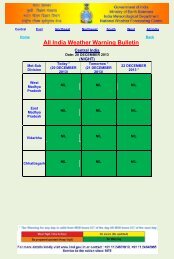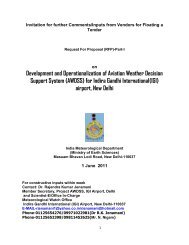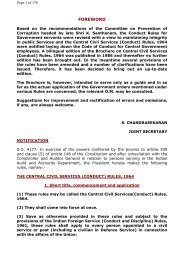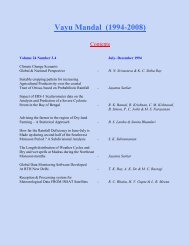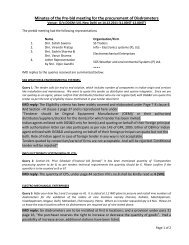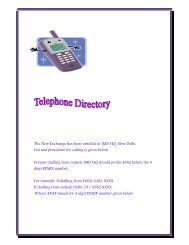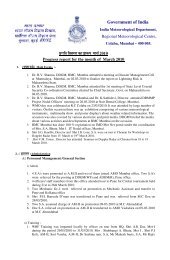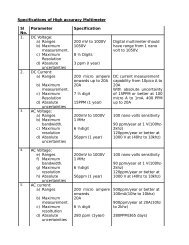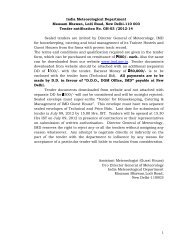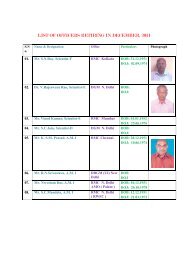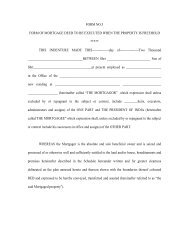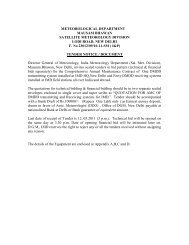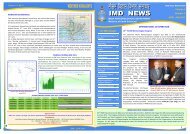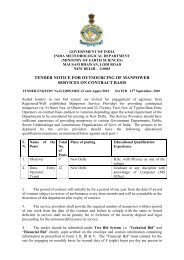Doppler Weather Radar - METNET - India Meteorological Department
Doppler Weather Radar - METNET - India Meteorological Department
Doppler Weather Radar - METNET - India Meteorological Department
You also want an ePaper? Increase the reach of your titles
YUMPU automatically turns print PDFs into web optimized ePapers that Google loves.
APPENDIX A<br />
AN OVERVIEW OF DOPPLER WEATHER RADARS<br />
A.1. DOPPLER WEATHER RADAR SYSTEM OVERVIEW<br />
<strong>Doppler</strong> <strong>Weather</strong> <strong>Radar</strong>s are used to detect, process, distribute and display meteorological data<br />
OVER a large area. <strong>Doppler</strong> technology opened new trends in the field of the radar meteorology<br />
and increased the performance of weather radars significantly. <strong>Doppler</strong> weather radars are<br />
capable of acquiring particle velocity data in addition to echo range, direction, and reflectivity<br />
data. Software processing is used to control the radar operating characteristics to produce the<br />
optimum radar volume coverage patterns and to optimize the radar returns. The base weather<br />
data is then processed through the application of meteorological algorithms to generate base and<br />
derived weather products. These products are further processed using graphics algorithms to<br />
produce interpretable weather data displays on color monitors in the form of images. After<br />
receipt of the reflected echo from target, the signal passes from processing stages for product<br />
generation. These stages include many complex processes and algorithms carried out by various<br />
weather radar software. This SOP is prepared to operate <strong>Weather</strong> <strong>Radar</strong> network of <strong>India</strong><br />
<strong>Meteorological</strong> <strong>Department</strong> with the uniform operations for better understanding and to create<br />
mosaic-ing for whole DWRs network, under IMD <strong>Radar</strong> Network around the country. The<br />
existing Cyclone Detection <strong>Radar</strong> Network in IMD shown in following Fig. A.1 and Storm<br />
Detection & Multi-met <strong>Radar</strong> network is shown in Fig. A.2<br />
Figure A.1 Cyclone Detection <strong>Radar</strong> Network<br />
Network<br />
Figure A.2 Strom Detection and Multimet <strong>Radar</strong><br />
<strong>Doppler</strong> <strong>Weather</strong> <strong>Radar</strong>s employs high dynamic-range linear receiver and DSPs (digital signal<br />
processors) to extract information from the received echo power. Linear receiver output in<br />
intermediate frequency (IF) and analog form is converted to digital form in the analog-to-digital<br />
53



